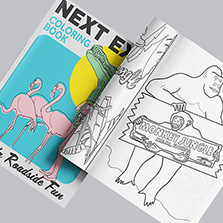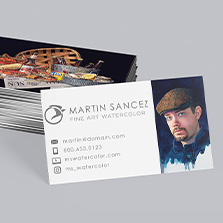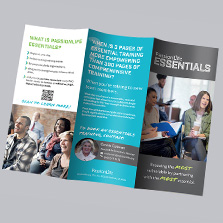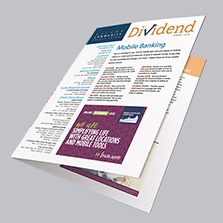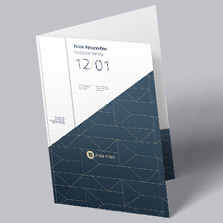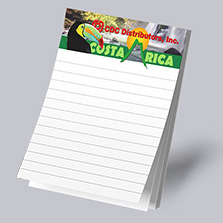
Step-by-Step Guide to Self-Publishing Children’s Books
Have a great idea for self-publishing children’s books but not sure where to start? You’re definitely not alone.
Publishing can feel like a maze, with so many choices that can get overwhelming pretty fast. But here’s the thing—you’ve already handled the hardest part: the million door book idea.
Now, let’s break down what you need to do next, step by step.
Traditional vs Self-Publishing
To understand publishing you need to know the difference between self-publishing and traditional publishing. In simple terms: you either own your book rights, royalties and creatives or a company does.
Traditional publishing is when a publisher offers an author a contract and then prints, publishes and sells your book through retailers and bookstores. They buy your rights and give you a portion of the royalties from the sales.
This is a great option if you are releasing 1-2 books a year and don’t want to be too hands-on. This process can be lengthy, anywhere from 12-24 months or longer. Each publisher has a different submission process but typically it needs to be a proposal along with a manuscript of your book. This can vary from 1-5 chapters with a synopsis or very rarely the whole book. You can face a lot of rejections along the way until someone wants to pick up your work.
Self publishing is when you publish your own material without the help of a publisher. This allows you to keep your material rights, control all creative aspects and keep all royalties.
Self-publishing children’s books gives you much more freedom. This is a much shorter process but you will have little to no support with this route. Because there is no one helping you along the way, the costs will be upfront-out of pocket.
Getting Started
After you landed on your initial idea for self-publishing children’s books, I bet you did a quick Google search. It’s easy to feel swamped with all that information, isn’t it?
- Clear your head: Don’t let the loads of information you read about overwhelm you. Take a moment. Breathe and clear your head. Take a walk or meditate to get in the right headspace for your project.
- Gather your ideas: Start with what you know- your main concept. Write down your initial thoughts. A brainstorming session can help. You can do this alone or with friends or family.
Writing & Editing for Children’s Books
Before starting to write your story, you need a foundation. Ask yourself these questions:
- Who is my reader? This will guide the language, themes, and characters.
- Will it be a book that parents feel good about sharing with their children?
- Are there any moral or learning lessons in this book?
- What sets your book apart from others?
To really hone in on your audience, you need to know that children book ages are categorized this way:
Early/Simple Picture Books: 2-5
Picture Books: 5-8
First Chapter Books & Graphic Novels: 6-10
Middle School Chapter Books & Graphic Novels: 8-12
Young Adult Books: 12 & up.
Online communities like Facebook, Twitter, Reddit and local writing groups are perfect for finding people willing to read your work and provide constructive criticism. This is also a great way to start networking and building a community! Try to read your work out loud. This can reveal a lot about how your story flows, how engaging it is, and any awkward phrases.
Affordable writing & editing platforms:
- Google Docs
- Kindle Create
- Microsoft Word
- Reedsy. Note: This platform allows you to write, format, and has paid editors as an option.
- Canva
- Scrivener. Note: there is a learning curve; if you are a beginner, you might spend a lot of time learning how to navigate.
- Hemingwayapp
- Grammarly Note: This is for basic editing
- Prowritingaid
Illustrations & Layout for Children’s Books
Regardless of the age, children’s books often rely heavily on the pictures to engage the readers and help them to understand what is being said.
When choosing an illustrator, look for someone whose style matches your vision for the book. Behance and even some social platforms like Instagram can be great places to find talented artists. Communicate clearly and be open to collaboration. Your illustrator might bring new ideas to the table that can help your story.
Don’t hurry past the cover design. A lot of people shop with their eyes, which is exactly why the term “don’t judge a book by its cover” was coined. The cover is the first thing a potential reader notices, and plays a big role in their decision to take a closer look or even purchase the book. First impressions matter and can make or break your books’ success.
Once the illustrations and layout are finalized, review the entire book to make sure your pictures are painting the story well and add to the story’s value. Remember this is what captures the imagination of the children who will be reading your book!
Tools for Layout and Design:
Do you need an ISBN?
An ISBN, or International Standard Book Number, is a unique ID for your book. This is what makes your book identifiable and trackable across bookstores and libraries worldwide. If you’re planning to sell your book through major retailers, whether online or offline, you’ll need an ISBN. This will also boost credibility with readers and sellers.

Each country has its own ISBN agency that is responsible for issuing ISBNs to publishers and self-publishers. In the United States, the agency is Bowker. When you register your ISBN, you’ll need to provide information about your book, such as the title, author, publisher (which can be yourself as a self-publisher), publication date, and format of the book. This number should be included on the copyright page of your book and in any promotional materials where your book is mentioned.
Some self-publishing platforms like amazon KDP offer free ones. If you opt for a free one, the ISBN might only be valid for distribution within that specific platform. This could limit your ability to distribute your book through other channels.
Printing for Children’s Books
The next big step is to bring your book to life through printing. This where your book really starts to take shape. Finding the right printer is crucial. This is where you have another big question to ask yourself: “Do I bulk print or print on demand?”
Print on demand allows you to print books as orders come in, minimizing upfront costs and storage needs. This option is smart if you’re unsure about the initial demand. Some P.O.D services offer to manage both printing and distribution. They will make it so your book automatically appears on some platforms to enhance it’s visibility.
Bulk printing might be a cost-effective choice if you expect high demand right away. Some printers even offer wholesale pricing so the higher the quantity, the lower the price per book. However, this requires upfront costs and you’ll need space for storage.
Print on Demand Services:
Bulk Printing Options:
If you plan to release an e-book version, make sure your layout works well on mobile devices. Kindle Create is is the best platform to turn your book into an e-book format.
Marketing for Children’s Books
Besides whether or not you have a good book, marketing is what will make or break your books’ success. How will people know your book even exists, if you don’t let people know about it?
First things first is creating your author persona. This is where the author-YOU- will be shown to the world.
- Author Bio: People want to know about the person who wrote what they are reading! This also gives you authority and credibility especially if your background aligns with your book.
- Website: Your book needs a home where readers, reviewers, and potential buyers can learn more about it. Include sections for your bio, book details, testimonials, and purchase links.
- Social Media Profiles. People love people. They want to keep up with the things they love. If they love your book they love you. Create author profiles for your marketing. Choose platforms where your target audience, such as parents and educators, are most active.
From there you are ready to start your marketing blasts. Remember that marketing is fun! Children love to have fun and are attracted to fun things.
Start your marketing local. Try to organize a reading at any nearby libraries and schools. Create, print, and hang up flyers in the library to promote this. Summer time, specifically late July and early August are perfect for this. This is back-to-school season and a lot of kids have summer reading lists.
Go to your local mom and pop bookstore and work on getting your book sold through them. Often times, there is a book buyer who handles these type of inquiries.
After this, venture into online marketing. When you’re online, the possibilities are endless. Remember, every big author started somewhere, and with the right push, your book can be the next big hit on children’s reading lists.
So, let’s get your story out there—onward and upward
FAQs
Should I self-publish my Children’s book?
In the long run, self-publishing is the easy part. The hardest part is making the sales to make your money back and/or a profit. This is where marketing ties in and will make or break your book. However, when it comes down to it, the pros of self-publishing far outweigh the cons.
What is the cheapest way to publish a children’s book?
The cheapest way is to self-publish your children’s book.
How much does it cost to self-publish a children’s book?
The costs can range anywhere between $0-5,000. This all depends on how much you can do yourself and how you market, print and distribute.
How long does it take to self-publish a children’s book?
This can vary on the printing but the process on average is 1-4 months vs the 18-24 months it can take with a publisher.
Ready to Publish? Let’s Make It Happen Together!
Ready to see your book in the hands of eager young readers? At PrintingCenterUSA, we’re all about making that happen. Whether it’s choosing the right print options or just getting some friendly advice, we’re here with you at every step.



